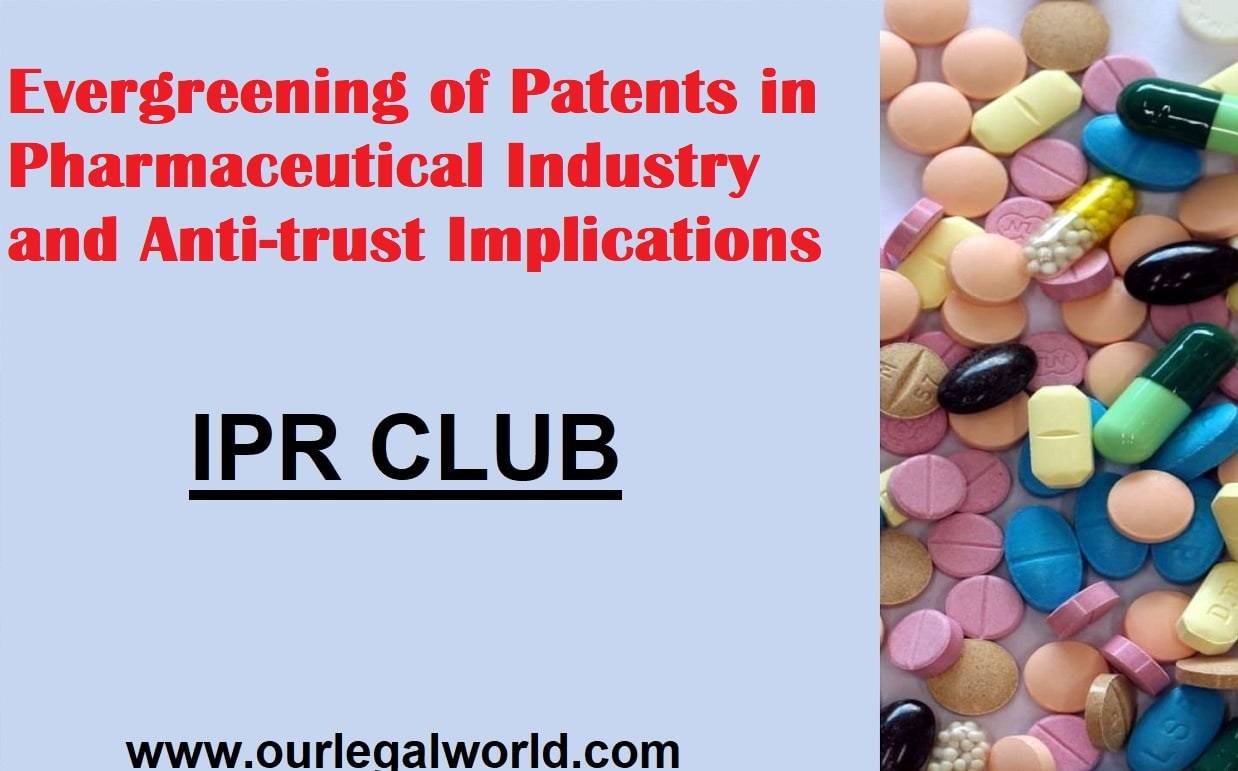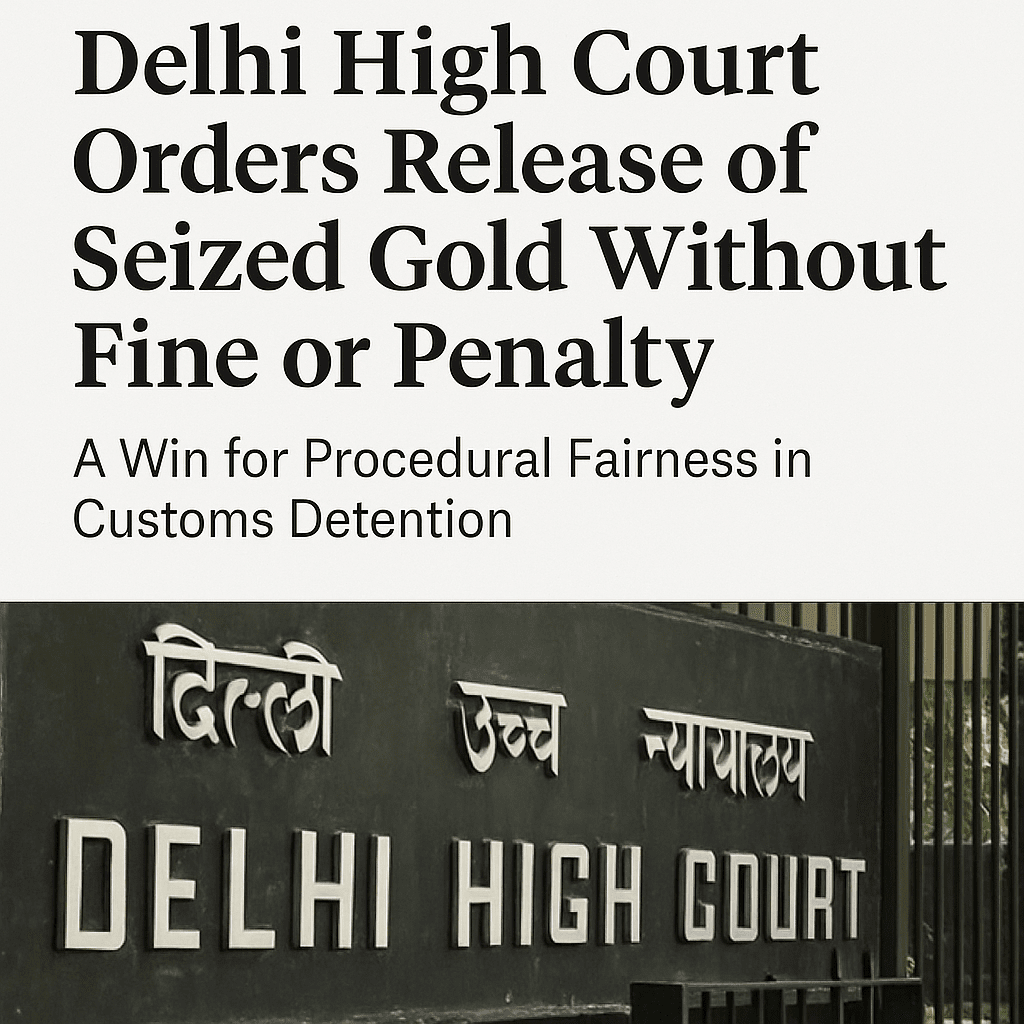Evergreening of Patents in Pharmaceutical Industry and Anti-trust Implications: IPR Club OurLegalWorld
Introduction
A big issue at the crossroads of public health and patents is the practice of ‘evergreening.’ The procedure acquired by the patentees through which they can extend their period of patent protection when the primary period expires after 20 years is known as Evergreening. This period helps prevent the patent from entering the public domain so that no one can exploit it. Pharmaceutical companies mainly adopt this strategy of extending the period of patent protection to protect their drugs and other pharmaceutical products. The patentee seeks to extend the patent protection for any by-product of the already patented drug which resulted from the minor changes to the patented drug. These changes are made at the time of or sometime before the patent’s expiration so that the holder can lengthen the period of protection. The patent can secure the manufacturing method or even the product’s colour. Therefore, the patent holder tries to acquire separate patents for different features of a single product. Thus, the condition when a patentee tries to get a patent for several attributes of a single product to use for extending the term of protection beyond 20 years can be called ‘Evergreening of Patents.’
Also Read: Pharmaceutical Patenting in India: IPR CLUB
According to Mr. Jim Keon, president of the Canadian Generic Pharmaceutical Association, the modified drug doesn’t offer enough of an advantage over the generic version of the original molecule. So, the Evergreening of patents is merely done to earn more profits. Companies give for the Evergreening of patent because they need finance to do R&D. But is this type of R& D useful? Just tweaking the original version of product in name of R&D dose only justify the monopoly of the innovating company without improving medication.[1]
Patentability of a drug
Understanding what makes a drug fit to get a patent and what characteristics in a drug can be patented is essential for understanding the mechanics of evergreening. To be eligible for a patent, a drug must, just as any other invention, satisfy the three basic criteria of novelty, non-obvious (manifested in the inventive step of the invention), and industrially applicable. Although the criteria might appear straight forward, the way it is interpreted and applied is critical in deciding what is fit and what is not to be granted a patent. Probably nowhere is this brought out more clearly than in the case of pharmaceuticals.
Traditionally, pharmaceutical companies filed patents for only the primary properties of a drug, such as the active ingredient, primary use, formulation, processes, and intermediates involved in manufacturing the drug. However, in the quest for sustained profits and market exclusivity, companies now file greater patents for a single product. These patents often cover numerous uses, drug packaging, dosing regimen, dosing route, dosing range, treatment methods, delivery systems, combinations, biological target, metabolites, polymorphic compounds, stereoisomers etc.
Branded versus generic drugs
The expiration of a patent brings generic versions of the drug that make considerable inroads into the markets of brand-name drugs. Therefore, pharmaceutical companies must prolong their drug life cycle as much as possible. Most pharmaceutical giants earn their major revenues from a couple of blockbuster drugs. A blockbuster drug losing its market exclusivity means huge company revenues drops. Companies want their monopoly on such drugs to sustain and evergreening has emerged as major strategy towards this end.
While branded companies advertise to customers and health organizations about their brand value and reliability and try to cast generics negatively based on poor replication, or unsatisfactory testing before commercial production of the original formula, the capitalistic approach weakens their case. However, the argument put forth by branded companies is that they enable the development of a non-infringing competitor product thereby channelling “designing around” the patent. By allowing patents for secondary developments, the branded companies not only fulfil the real goal of the patent system (patents as a reflection of technological progress) but also encourage other companies to engage in innovation.[2]
In the battle between generic and branded drug manufacturers, the consumer seems to be the biggest loser. Full-fledged generic competition between 5 and 6 manufacturers typically leads to 70–80% lesser expenditure to the consumer. When the generic drug manufacturer is prevented from entering the market the patient is left with no option but to stick to the highly priced brand-name drug. Great injustice is done to the consumer when evergreening is done through patenting strategies involving supposedly improved successor drugs that can be barely called improvements. When consumers could have opted for cheaper generic drugs, pharmaceutical giants mislead them into transferring to the more expensive successor drug.
India’s Perspective
India altered its patent laws to accept the TRIPS obligations in 2005. Section 3(d) of the Patent Act, 1970, included by the amendment of 2005. It restricts pharmaceuticals from getting secondary patents on minor changes and requires the new drug to differ substantially in efficacy from the previous drug. Section 3(d) is unique to the Indian jurisdiction and is considered additional scrutiny for patent applications. Because of the restraining approach of Section 3(d), pharmaceutical companies in both domestic and foreign jurisdictions usually regard the said section as a barrier to the patentability of their products or processes if they fall under the category of a novel form of a known substance or a method of preparing an already known substance.
As a result, patent renewal is difficult in India (in contrast to many other countries). The benefit of preventing patent evergreening is that it provides relief to poor people who rely on life-saving medications. It also contributes to keeping the cost of essential pharmaceuticals within reach of ordinary people in developing and poor countries.[3]
The Essence of Healthy Competition and Patent Laws
The current methods of evergreening are clearly at odds with the fundamental aim of patents, which is to encourage development through creativity rather than to protect the inventor. Evergreening activities undermine the noble objective of patent laws by exploiting gaps in existing regulation. Companies try to extend their monopoly by seeking patents for hardly inventive characteristics. Marginal alterations, new uses of existing drugs and even new dosage regimes are often used to extend patents. Although in compliance with the law, such practices are against the spirit of the patent laws. An important reason behind the existence of patent laws for a limited period is to ensure that there is always an incentive to innovate. Companies should channel their efforts towards productive research and development to develop new, effective drugs by the time their blockbuster products’ patents expire. Furthermore, exploiting lacunae in patent regulations to keep generics out of the market is not only against the consumer’s interests but also extremely anti-competitive.
Anti-trust Implications in Patents
Competition laws are intended to ensure a fair competition between businesses, for example, by making rules to control monopolies. A crucial aim of IP rights is to cherish and incentivize innovation through granting exclusive rights to the originators which can conflict with competition policies. On the other hand, some may reason that this dynamic nature of these innovation markets, may not necessarily upset competition as rivals strive to bring a better product or service to gain an edge in the market. A common notion is that rivalry can lead to a more effective apportionment of resources and steering inducements to innovate.
Competition law enforcement adds to securing access to innovative, affordable medicines for its users. Still, it does not replace or intervene with the legislative & regulatory measures designed at ensuring that patients benefit from modern and reasonably priced medicines or healthcare. The question that surfaces is whether the objects pursued by IP and competition law run in parallel or if they complement each other.
Competition in pharmaceutical markets depends on multiple factors, including R&D activity, marketing authorization requirements, access to capitals, IP rights, pricing regulations, promotional efforts, commercial risks, etc. A comprehensive understanding of these considerations is essential to assess whether certain conduct or a specific transaction is anticompetitive.
In the competitive markets, a company’s success is based on its business performance. Firms must innovate to compete on productivity by offering higher quality and a wider range of new and improved goods and services.[4] States have set various measures to create a favorable environment for advancing innovation, which is the key driver of economic growth. These include giving property rights to the outcomes of invention in the form of patents and enforcing competition law norms to promote dynamic competition. [5]
One of the primary arguments for the patent system is fostering invention, which serves as a catalyst for economic growth and progress. As a result, the laws of the market are distorted, as are the intellectual properties of others. These exclusive rights are a critical incentive to invest in R&D and innovation, especially in sectors such as pharmaceuticals, where R&D expenses are considerable but the costs of replicating R&D achievements are minor.
The practice of strategic patenting, which can lead to higher medicine prices and stifle innovation, raises the question of whether it should be exempt from competition law oversight or if there are situations where it might be subject to scrutiny. Historically, competition law has not typically intervened in strategic patenting. This stance is supported by several arguments, including the belief that competition law should only step in when intellectual property rights are being used and not just because they exist.
Moreover, it is argued that strategic patenting is legal because it is consistent with the patent system, and that internal patent law procedures should keep this conduct under control. As a result, in the lack of any additional circumstances, it should fall outside competition law’s horizon. This strategy essentially precludes any competition law enforcement action associated with strategic patenting.[6]
One of the objectives of competition law in India is safeguarding consumer’s rights and ensuring that big companies are not taking undue advantage of their dominance in the market. Allowing these brands to evergreen their patents will lead to the loss of consumers as the generic brands will not get a fair play in the market. Thus, it would be in the favour of consumer and competitive spirit in the market for CCI to have jurisdiction in Evergreening patents cases.
Novartis versus India: The Solution to Evergreening
Novartis AG of Switzerland applied for the patent for their anti-cancer drug Imatinib Mesylate for Chronic Myeloid Leukaemia, sold under the Gleevec label. They had already obtained patents for Gleevec in more than 30 countries, including the USA. The patent for Gleevec was rejected by the Controller of Patents in 2006 because, under India’s patent law, patents must only be given to new innovative medications and not to new structures of compounds or new usage of already drugs that has a patent unless the new form is significantly more effective.[7]
In Novartis AG v. Union of India[8], Novartis sought to enforce its exclusive marketing right by bringing a suit for infringement against Indian Pharmaceutical Companies such as Medihaux International, Ranbaxy Laboratories, Adarsh Pharma, Cipla Limited etc. to restrain them from manufacturing, selling, distributing and importing the anti-cancer drug composed of beta-crystalline form of Imatinib Mesylate which are the generic versions of Gleevec and further declaration that section 3(d) of the Patents Act, 1970 as substituted by the Patents (Amendment) Act, 2005 is non-compliant with the TRIPS Agreement and is unconstitutional being vague, arbitrary and violative of Article 14 of the Constitution. It should be emphasized that the key element Imatinib was patented in 1993, and its new form beta salt crystals has not been shown to benefit patients any more than the original.
According to the court, the product was one of the novel forms of the chemical, not the entire substance. It has always existed in its amorphous state.
The provision explicitly says that a new version of the material in not protected by Indian law unless it improves its “recognized efficacy”.
Novartis argued that the physicochemical features of the polymorph form of the imatinib molecule, namely better flow properties, higher thermodynamic stability, and lower hygroscopicity, led to improved efficacy and hence are patentable.
The Supreme Court declined this argument, holding that efficacy in the case of medications means “therapeutic efficacy,” and these features, while useful to some patients, do not reach this criterion. The Supreme Court also ruled that patent applicants must demonstrate an enhancement in therapeutic efficacy based on in vivo animal study data.
The Supreme Court determined that the main purpose of Section 3(d) is to stop “evergreening,” If an invention does not meet the criteria outlined in Section 3(d), it will not be granted a patent. However, the court also emphasized that this decision should not be considered a blanket ban on all “incremental inventions.” Special care and attention should be given in the medical field, particularly life-saving drugs, to ensure that the rights and well-being of the general public are protected.
Conclusion
The 2005 amendment to India’s intellectual property laws demonstrated that the country is committed to adhering to World Trade Organization guidelines, while also taking steps to prevent “evergreening”. The Indian judiciary’s handling of cases like Novartis and Cipla has shown that Section 3(d) serves as a safeguard against evergreening by pharmacy companies, which often make small changes to a product and re-apply for a patent, slowing down research and development and hindering the growth of the country. Additionally, these cases make it clear that the primary consideration is public benefit when evaluating and granting patent applications. India’s patent laws encourage innovation, but do not grant absolute rights, instead providing a restrictive framework that promotes further research and development and the development of better medicines in the market.
The big pharma companies have been criticizing India’s Section 3(d) as being too oppressive on them and against the TRIPS principles. They have argued that Section 3(d) discourages the inventors towards incremental innovations in the pharmaceutical field. The Indian Government counters that patent exclusivity is to incentivize innovation and not for tweaking known compounds without any advancement in efficacy.
Written by Devansh Choudhary [HPNLU]
[1] Collier, R., 2013. Drug patents: the evergreening problem.
[2] Dwivedi, G., Hallihosur, S. and Rangan, L., 2010. Evergreening: a deceptive device in patent rights. Technology in Society, 32(4), pp.324-330.
[3] Shilpi Kumari, “India: Ever-Greening Of Patents: An Introductory Brief”, available at: https://www.mondaq.com/india/patent/974246/ever-greening-of-patents-an-introductory-brief
[4] European Commission (2009) Executive summary of the pharmaceutical sector inquiry report. https://ec.europa.eu/competition/sectors/pharmaceuticals/inquiry/communication_en.pdf.
[5] Lianos, I., 2016. competition law and Intellectual Property (IP) rights: analysis, cases and materials.
[6] T-321/05 AstraZeneca v Commission [2010] ECR II-2805; 5 CMLR 1585, para. 362.
[7] Prachi Gupta, Ever Greening of Patents Of India, available at: https://articles.manupatra.com/article-details/Ever-Greening-Of-Patents-Of-India
[8] (2013) 6 SCC 1







![Tax Law Internship at Legum Attorney [Chamber of Ashish Panday], Delhi : Apply by 15th May 2025](https://www.ourlegalworld.com/wp-content/uploads/2025/05/IMG_0113-min.png)

